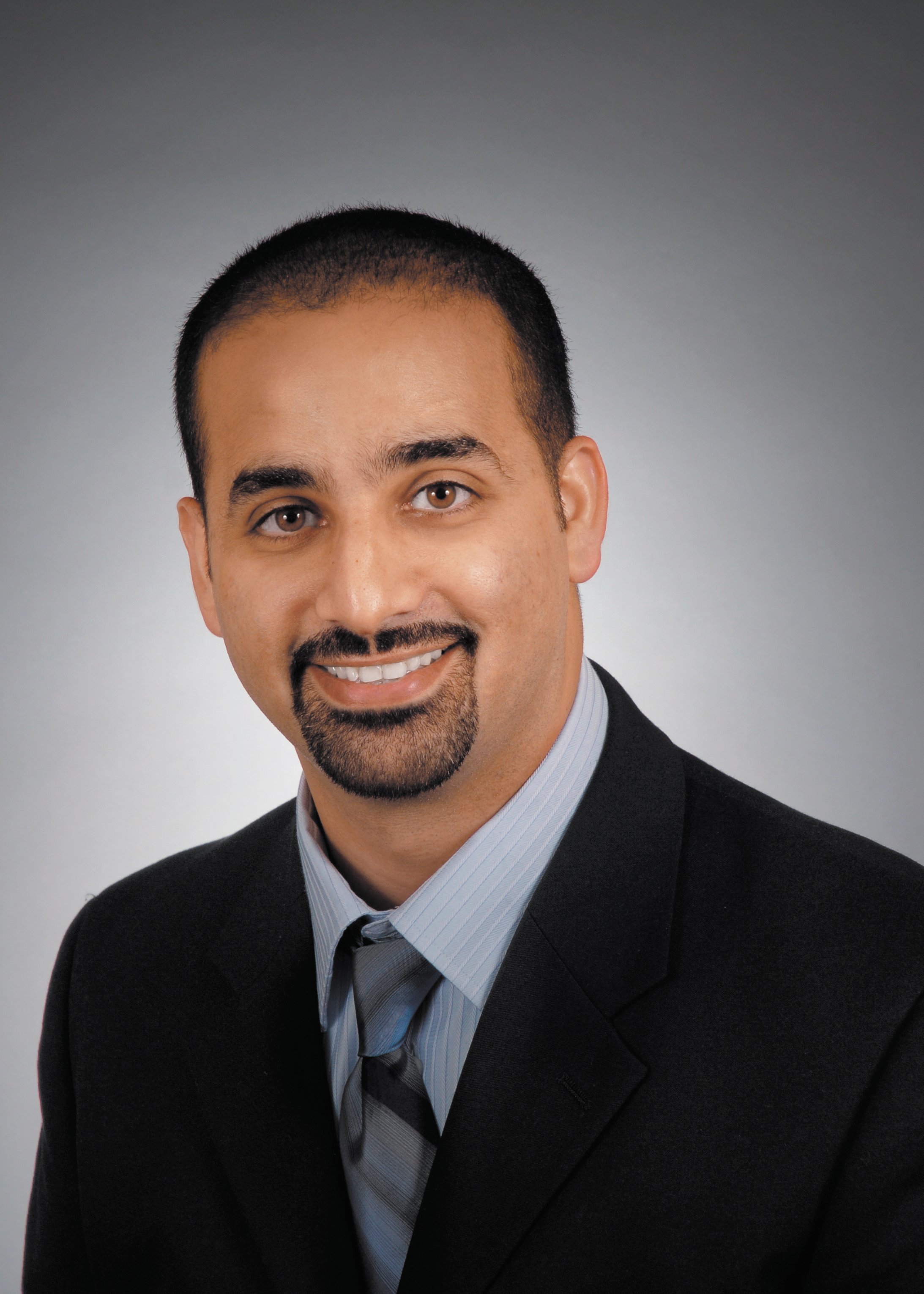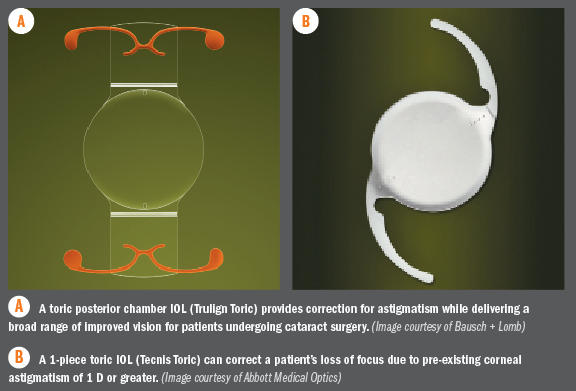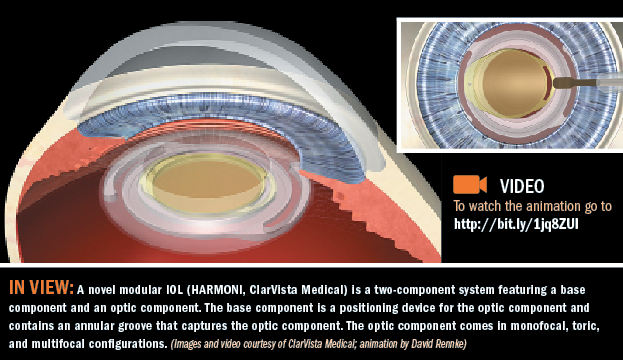Article
2013 brings new IOL options
While US cataract surgeons still have limited access to pseudophakic correction technology, there were several premium IOLs made available this year that offer toric correction, an important step forward.
Take-Home
While US cataract surgeons still have limited access to pseudophakic correction technology, there were several premium IOLs made available this year that offer toric correction, an important step forward.

Dr. Kahook
By Cheryl Guttman Krader
Cataract surgeons in the United States still have limited options for pseudophakic correction compared to their colleagues elsewhere in the world. However, 2013 has brought access to a toric IOL able to correct near, intermediate, and distance vision (model AT50T; Trulign Toric, Bausch + Lomb).
In addition, the FDA approved a third toric IOL (model ZCTXXX, Tecnis Toric, Abbott Medical Optics) for the US market.
Ophthalmology Times editorial advisory board members, Malik Kahook, MD, Randall Olson, MD, and Mark Packer, MD, spoke about these new implants and other developments in IOL technology.
Premium toric technology

The Trulign Toric IOL is a modification of the existing hinged plate haptic silicone Crystalens AO platform that differs from the parent lens only by having toric correction on the posterior surface of the biconvex optic and two axis orientation marks on the anterior optic surface.
In regards to the Trulign Toric IOL, Dr. Packer noted there is a gamut of opinion about the Crystalens IOL (non-toric) in terms of its performance for providing an extended range of vision and the underlying mechanism of any benefit. However, based on available evidence, he said he is convinced that it provides better intermediate and near vision than a monofocal IOL and therefore reduced dependence on glasses.
“Whether the reason for the performance of the Crystalens IOL is increased depth of field or true accommodation is a matter of discussion, and it is worth noting that the FDA did not give the Trulign Toric IOL an indication for ‘accommodation’,” said Dr. Packer, who is in private practice, Bowie, MD, and clinical associate professor of ophthalmology, Oregon Health & Science University, Portland. “However, with the Trulign we finally have a toric lens that can provide more than just good distance vision, and the FDA study data show that it does a very good job of correcting astigmatism.”
Dr. Packer noted that in the FDA study, distance UCVA was 20/40, or better in 98% of eyes implanted with the Trulign Toric IOL, which is a better result than that achieved in the FDA studies for the AcrySof Toric (Alcon) or Tecnis Toric (Abbott Medical Optics) IOLs.
He proposed the difference might be explained by the polyimide loops of the Trulign Toric IOL as they might provide better rotational stability.
“Surgeons who use the Crystalens are well familiar with how difficult it is to rotate the lens in the eye,” Dr. Packer said. “Whereas a single-piece acrylic IOL is relatively easy to rotate, moving the Crystalens requires freeing the haptic loops from the capsule equator. I think better rotational stability with a toric IOL translates into better UCVA.”
Dr. Packer said he is looking forward to having the toric versions of the AcrySof ReSTOR and Tecnis multifocal IOLs as those implants are doing well outside of the United States.
Dr. Olson agrees that having a premium IOL available that also offers toric correction is an important step forward, although he said he is waiting to see more data on the Trulign before making any comments about it.
He noted that the AcrySof platform lends itself well to non-rotation and that the AcrySof Toric IOL has demonstrated good clinical performance. Additionally, it appears that the new Tecnis toric IOL seems to deliver reliable astigmatic correction. However, he welcomes evidence to show that any toric IOL is better than another.
“Theoretical reasons for superiority are interesting, but I like to see the proof,” said Dr. Olson, professor and chair, department of ophthalmology and visual sciences and CEO, John A. Moran Eye Center, University of Utah, Salt Lake City.
Although available data demonstrate the efficacy of toric IOLs for reducing or eliminating astigmatism and their popularity is growing, he said any cataract surgeon offering astigmatic correction still needs to know how to use incisional techniques.
“A lot of patients are unhappy with any amount of residual astigmatism above 0.5 D and some are even unhappy at that level,” Dr. Olson said.
Presbyopia-correcting IOL development ongoing

Dr. Olson
The category of presbyopia-correcting IOLs has been pretty static in 2013.
In this category as well, Dr. Olson said he believes that no one available platform stands out for “delivering a clear knockout punch.” For that reason, he believes that most surgeons are using the various products in different situations determined on a case-by-case basis while still waiting for a truly accommodating IOL.
Development of the DynaCurve (NuLens)-a sulcus-based accommodating IOL-and the FluidVision accommodating IOL (PowerVision) continued during 2013, and the available research findings indicate each has a large range of accommodation. However, these investigational lenses remain years away from FDA approval, Dr. Olson said.
Dr. Kahook, The Slater Family Endowed chair in ophthalmology and professor of ophthalmology, University of Colorado, Denver, noted that while the DynaCurve and FluidVision IOLs have been in development for some time, there is still not enough clinical data to prove they can provide reliable and long-term accommodation.
In addition, he raised concern that none of the accommodating IOLs in development addresses the problem of PCO development that will limit the function of an accommodating IOL months after implantation.
The need to limit PCO was just one of the issues considered by Dr. Kahook in developing a novel modular IOL system (HARMONI, ClarVista) that entered clinical investigation in October.
The platform consists of a base component and an optic component that fits into an annular groove within the base (Figure). It is implantable through a 2.2-mm incision and is also designed to deliver improved refractive outcomes-both by having a more predictable effective lens position and allowing intraoperative customization of lens power. In addition, its modular design provides for safe and easy postoperative enhancement with minimal to no manipulation of the capsular bag.

“One of the major factors that has hindered the adoption of premium IOLs is the inability to address refractive surprise, glare, and overall patient dissatisfaction postoperatively,” Dr. Kahook said. “Many patients express displeasure with the results of a diffractive IOL, and the current options to address dissatisfaction include permanent corneal modifications or IOL exchange.
“The HARMONI Lens system allows surgeons to address the refractive issues directly by elegantly replacing the optic component through a minimally invasive incision without fear of injuring the capsular bag as is the case with traditional IOL exchanges,” he continued. “The two-component design also enables use of a slightly larger rhexis to limit glare from the anterior capsule edge, and the base component provides a superior barrier to inhibit PCO proliferation. The flexibility of the platform also allows for future upgrades from a monofocal lens to a premium lens or to new technology that is not yet on the market.”
News on existing IOLs

Dr. Packer
Dr. Olson observed that 2013 was the first full year during which cataract surgeons had access to three different single-piece hydrophobic acrylic IOLs: the original AcrySof, the Tecnis 1-piece, and the enVista (Bausch + Lomb).
He noted that he believes these products are more similar than dissimilar. That impression seems to be reinforced by the absence of any solid evidence from comparative studies to show otherwise, Dr. Olson said.
While the enVista is touted for its glistening-free material, Dr. Olson said that the acrylic material of the Tecnis IOL enjoys a good reputation in terms of glistenings. Moreover, he believes that while there is a lot of talk about the negative impact of these material defects, there is a need for evidence from well-designed studies to demonstrate that the average level of glistenings that can develop in a hydrophobic acrylic lens truly affects vision.
Also within the topic of IOL news during 2013, Dr. Packer felt a published paper [Venter JA, et al. J Cataract Refract Surg. 2013; 39 (10): 1477-84] reporting outcomes of the zonal refractive IOL (Lentis Mplus, Lentis) was worth mentioning.
Although the lens is not available in the United States, he said he felt the paper was noteworthy for two reasons: first, the retrospective case series includes data for follow-up to 6 months in 4,683 bilaterally implanted patients (9366 eyes)-which likely makes it the largest published series on any single IOL. In addition, Dr. Packer said he was pleasantly surprised by the overall excellent results given the size of the population and his original skepticism based on the lens design.
At 6 months, mean binocular logMAR UNVA was 0.159, 97.5% of patients were satisfied and willing to recommend the procedure, and only 55 eyes (0.6%) had undergone IOL exchange for dysphotopsia.
“When I first saw this optic, I thought the design, which is like Ben Franklin bifocal, would cause significant dysphotopsias,” said Dr. Packer. “The published results and information shared with me by colleagues who are using the lens clearly shows that first reactions are sometimes wrong.
“Nevertheless, the data from this series are a reminder that explantation for dysphotopsias is a reality with multifocal IOLs. Despite careful patient selection and thorough counseling about the development of halos and other visual symptoms, not everyone is happy with the outcome,” he said.
According to a study conducted by Dr. Olson and colleagues, pseudophakic dysphotopsia is a common and clinically significant problem even in ideal patients implanted with a monofocal IOL [Kinard K, et al. J Cataract Refract Surg. 2013; 39 (4): 590-7.].
On reviewing charts from almost 3,000 patients, they identified 70 who had uneventful surgery, logMAR BCVA 0.02 or better after 1 year, and no ocular complaints or pathology.
The patients underwent comprehensive examination and completed questionnaires to evaluate dysphotopsias, visual function, and satisfaction.
The dysphotopsia questionnaire asked patients to rate various symptoms on a scale of 0 (no problem) to 10 (debilitating). The results showed almost 30% of patients gave a score of 5 or greater for multiple symptoms and 17% rated a number of symptoms with a score of 8 or greater.
Correlation analyses showed the degree of pseudophakic dysphotopsias was a strong predictor of both level of patient dissatisfaction and outcomes on the visual function questionnaire.
“In this study of ‘supernormal’ cataract surgery patients, we found dysphotopsia was far and away the biggest complaint and that it became a functional problem for patients as they went about their daily tasks,” Dr. Olson said. “Pseudophakic dysphotopsia is really the 900-pound gorilla in the room. Patients may not spontaneously report it, but it is a real problem that is more common than surgeons realize and an issue that IOL manufacturers need to address.”
Dr. Olson noted that so far, he believes Rayner is the only manufacturer showing interest in the problem. Otherwise, he said Samuel Masket, MD, holds a patent for a lens to address dysphotopsia.
Based on the concept that dysphotopsias are a function of capsular overlap of the IOL optic, the lens features a groove into which the anterior capsular leaf is inserted.
Mark Packer, MD
E: mark@markpackerconsulting.com
Dr. Packer is a consultant to Abbott Medical Optics, Advanced Vision Science, Bausch + Lomb, and Rayner.
Randall Olson, MD
E: randallj.olson@hsc.utah.edu
Dr. Olson has no relevant financial interests to disclose.
Malik Kahook, MD
Dr. Kahook is a consultant to Alcon, Allergan, ClarVista Medical, Aerie Pharma and the FDA. He has intellectual property interests with Abbott Medical Optics, Glaukos, New World Medical, Oasis, ClarVista Medical and Prospex Medical.
Subscribe to Ophthalmology Times to receive the latest clinical news and updates for ophthalmologists.





